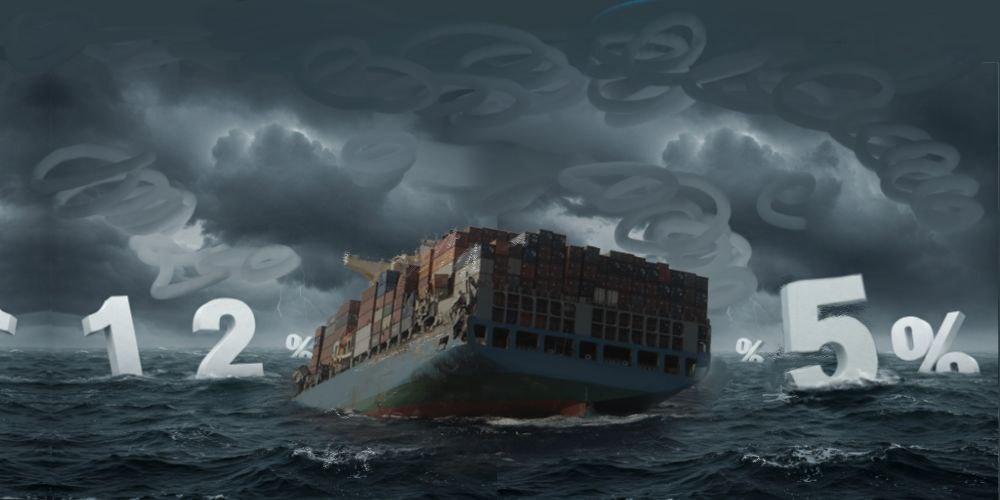Experts believe that Central Asian countries stand to gain from U.S. President Donald Trump’s renewed trade war with China, but the region also faces substantial risks.
Kazakhstan Bears the Brunt
On April 3, Trump signed an executive order imposing “reciprocal” customs duties on goods from dozens of countries. Kazakhstan faced the steepest tariff in Central Asia at 27%, while Kyrgyzstan, Uzbekistan, Tajikistan, and Turkmenistan each received a flat 10% rate.
Kazakhstan’s Ministry of Trade explained that 92% of the country’s exports to the U.S., including crude oil, uranium, silver, and ferroalloys, were among the exempt categories listed in the order. As a result, only 4.8% of total exports to the U.S. would be affected. The government has announced its intent to hold consultations with Washington to avoid further tariffs.
More broadly, global economic uncertainty tied to the trade war may cause further weakening of national currencies across Central Asia. Declining demand for oil could depress prices, posing a particular threat to Kazakhstan, where oil is a primary export. On April 9, Trump announced a 90-day freeze on additional tariffs, applying a temporary 10% duty for more than 75 countries, excluding China.
Open Confrontation with Beijing
In a sharp escalation, the U.S. raised tariffs on Chinese imports to 145%. Beijing retaliated with 125% tariffs on U.S. goods, effectively halting trade. As the Chinese government noted, duties at this level “no longer make economic sense.”
On April 13, Trump, responding to pressure from the U.S. business community, reversed duties on processors, computers, smartphones, and electronics. According to Morgan Stanley, 87% of iPhones are made in China, and production of the upcoming iPhone 17 will also be based there. Additionally, four out of five iPads and 60% of Macs are manufactured in China.
Meanwhile, Chinese President Xi Jinping has urged European nations to resist what he described as Trump’s erratic trade policies.
Central Asia: Strategic Position, Mixed Prospects
With Chinese goods effectively shut out of the U.S. market, Beijing is likely to turn to alternative trade routes. While Southeast Asian nations such as Vietnam and Malaysia benefitted during the 2018-2019 trade war, this time Trump has also targeted some of them with tariffs, fearing rerouted exports.
China’s growing pivot toward Eurasia places the Central Asian countries at a critical transit junction. Their strategic position on land routes to Europe offers untapped potential for trade reorientation.
Kyrgyzstan, in particular, has served as a conduit for Chinese goods, with Chinese-manufactured items re-labeled as Kyrgyz products before entering markets across the CIS. This practice, noted as early as 2015, primarily catered to Russia but also extended to Kazakhstan.
More recent findings indicate that illegal Chinese imports into Central Asia may total billions of dollars. The existing smuggling infrastructure could be formalized and scaled, facilitating increased regional trade.
Long-term benefits could include heightened cargo traffic through Kazakhstan, Uzbekistan, and Kyrgyzstan, sparking Chinese investment in logistics infrastructure and creating jobs in transport.
Risks of Overreliance
The trade conflict may also incentivize some Chinese manufacturers to relocate assembly operations to neighboring countries with preferential trade access. If these ventures meet local value-added criteria, they could potentially avoid U.S. tariffs. Chinese firms are already exploring joint ventures in Kazakhstan and Kyrgyzstan to enter Eurasian and European markets.
Meanwhile, Chinese products continue to dominate Central Asian markets, spanning textiles, electronics, industrial equipment, and more. If Western access shrinks further, Chinese producers may increasingly flood regional markets with inexpensive goods.
While this could help manage inflation, it would also undercut local industries. For instance, textile and footwear manufacturers in Uzbekistan and Kyrgyzstan may struggle to compete with cheaper imports.
Moreover, Central Asia risks growing economically dependent on China. Closer economic integration may also invite backlash from Washington, including the threat of sanctions.






